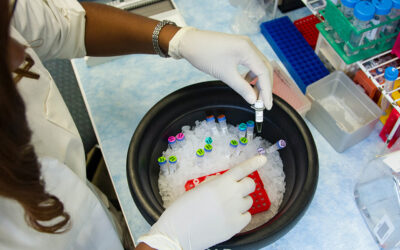New research has revealed that of 99 patients diagnosed with gestational diabetes, 71.7% would have been missed by a commonly employed “casual” blood glucose test.
“The goal is to protect more mothers and babies from gestational and childbirth issues caused by this form of diabetes, and in general reduce the risk of developing the disease in the future,” Kobe University obstetrician Tanimura Kenji, author of a paper published in the Journal of Diabetes Investigation, said in a press release.
Gestational diabetes mellitus is a form of hyperglycemia that develops during pregnancy in those with no prior history of high blood sugar. Worryingly, gestational diabetes mellitus, already one of the most common complications in pregnancy, is on the rise.
In the United States it is estimated that around 3% to 8% of pregnancies will be impacted by gestational diabetes mellitus. But this isn’t a localized problem. According to the U.S. National Institute of Health (NIH), the prevalence of gestational diabetes mellitus has increased by over 30% over the last two decades, with developing countries particularly affected. The NIH adds that this means gestational diabetes mellitus constitutes a global epidemic.
Though gestational diabetes mellitus usually disappears after giving birth, this glucose intolerance can affect the health of both mother and child. In particular, complications can include babies growing larger than usual and both mother and child developing type II diabetes later in life. The key to preventing this harm is effective diagnosis and treatment.
Popular tests miss a majority of cases
Currently, the International Association of the Diabetes and Pregnancy Study Groups recommends an oral glucose tolerance test be given between weeks 24 and 28 for patients with no previous diagnosis of diabetes.
The test consists of multiple steps, including 8 to 12 hours of fasting and the collection of a blood sample, which allows a baseline to be established. Following this, a solution with a set amount of glucose is consumed. Finally, a second blood sample is taken, which allows doctors to determine how well the glucose has been metabolized.
However, many health facilities also use a “casual blood glucose test.” As the name suggests, this test consists of fewer steps than the recommended test. This quicker and less expensive test only checks blood glucose once and doesn’t consider what the patient has consumed prior to testing. The facilities offering the casual test as initial screening will only offer the more intensive test if the casual glucose blood test delivers a positive result.
Tanimura and his graduate student Tomimoto Masako wanted to know if this two-tier approach was missing cases of diabetes during the first screening with patients, who, therefore, missed out on the second, more robust test.
To test this, they combined the casual blood screening test with a more sensitive blood glucose test for patients visiting Kobe University Hospital’s perinatal center. After this combined test, women who tested positive took the more robust glucose test.
This allowed Kenji and Masako to determine how many positive results would have been missed by the casual test alone. They found over 71% of positive cases were missed by the casual test alone.
“Although there have been studies showing that the casual blood glucose test is less sensitive than others, no studies have directly compared the results in the same individuals,” Tomimoto said in a statement. “Our study confirmed that this screening method, which is widely used in practice, frequently misses the condition it is meant to detect.”
A more widespread issue than previously thought
The team went beyond this initial experiment to determine if this could be a more widespread issue by conducting a survey of care facilities in Hyogo Prefecture, the location of Kobe University. This revealed that 43% of these facilities relied solely on the casual blood glucose test for initial screening.
“In Japan, where about half of all deliveries take place in obstetric clinics rather than hospitals, the more accurate but complicated and time-consuming tests are not widely used,” Tomimoto explained.
This issue impacts countries beyond the borders of Japan, too. For instance, similar surveys to that conducted by this team have shown that in the UK, where 30,000 in 700,000 pregnancies are impacted by gestational diabetes mellitus, according to the NHS, up to 48% of clinics also only rely on the casual blood glucose test for initial screening.
“We would like to educate healthcare professionals and patients about this danger and encourage them to promote the use of the more accurate glucose tolerance screening method,” Tanimura concluded.
Reference: T. Kenji., T. Masako., et al., Problems in screening for gestational diabetes mellitus by measurement of casual blood glucose levels at 24–28 gestational weeks, Journal of Diabetes Investigation (2024). DOI: 10.1111/jdi.14310

















